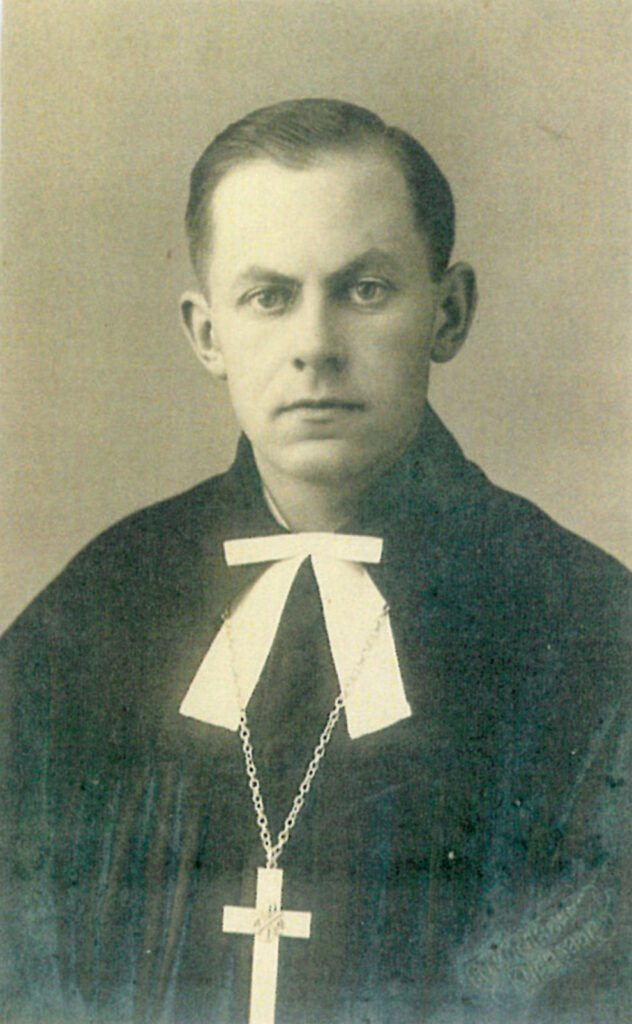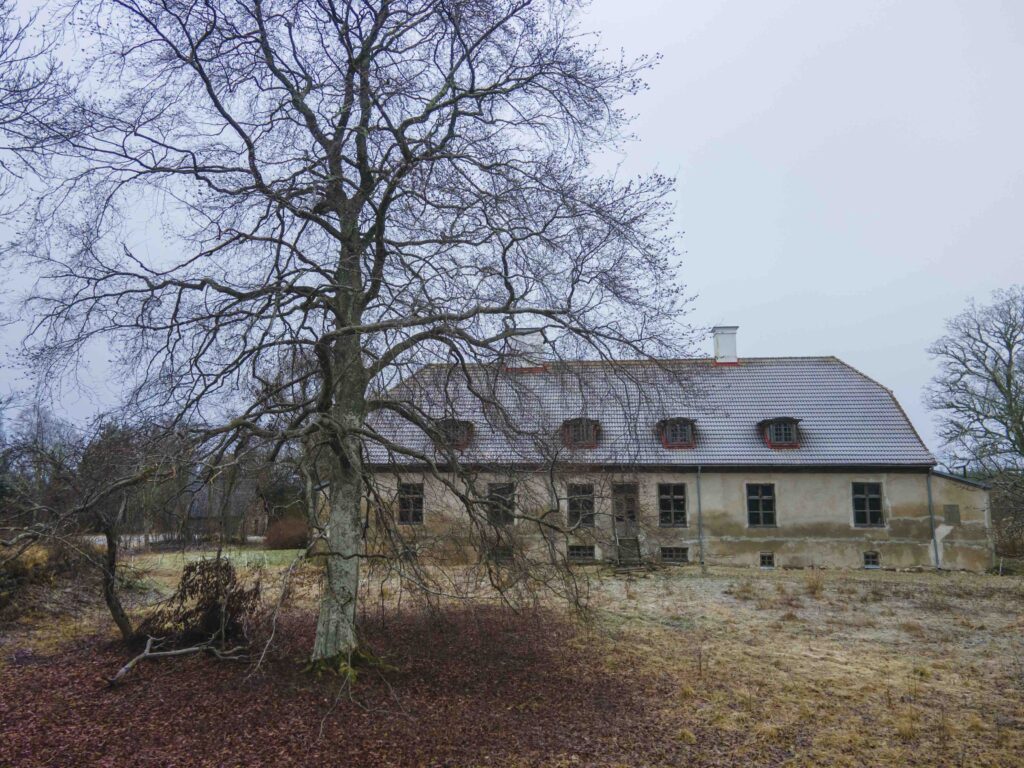Will the red beech of Reigi Parish in Estonia’s Hiiumaa island – a tree that has its roots in Reigi, but branches in Germany – become the European “tree of the year”?
The news that the red beech growing in the garden of Reigi clergy house in Hiiumaa has been chosen to represent Estonia in the European Tree of the Year contest came as a surprise to the descendants of its planter in Germany, as the fact that it was planted on the occasion of his grandfather Theodor’s birth in 1903 is missing from the family’s otherwise detailed chronicle.
The best-known descendant of Richard von Hirschhausen, the Baltic German pastor of Reigi, is today his great-grandson Eckart, whose many books have become international bestsellers. Eckart is a doctor who has turned his profession into a highly successful entertainment career and, in addition to TV shows, has been performing as a comedian to large audiences for many years.
Hirschhausen has been committed to health promotion through witty humour since his student days, noticing early on that his jokes and magician’s tricks in the hospital helped his tiny patients even more than the medicine.
In January, Eckart put his show on hold because he realised that today the planet Earth itself needs an ambulance, and this is how he put it: “We don’t need to save the climate, we need to save ourselves. The basis for health is clean air, clean drinking water, edible plants and tolerable temperatures. All these four pillars of health are under acute threat.” That’s why he is committed to his foundation, Healthy Earth, Healthy People, and promises to return to the stage and make jokes again only when the planet is saved.

From Halle in Germany to Reigi in Hiiumaa
The family chronicle reveals that Richard von Hirschhausen came to Reigi as a pastor from the Estonian town of Rakvere, as all of his son Theodor’s older sisters and brothers were born in Rakvere.
Their ancestor Jacob came to Estonia in the early 18th century from Halle in Germany and became a schoolteacher in Tallinn. It was Jacob Johann Anton Hirschhausen who received his noble ranks in 1835 for his contribution to the first German-Estonian dictionary.

Theodor, whose birth was marked by the planting of a red beech tree, a rare species in Estonia at the time, also became a pastor – the sixth generation in his family. Richard died in 1916, shortly after returning home from Siberia following his deportation during the First World War.

Theodor worked as a pastor in Kärla, Saaremaa, and died at a very young age of meningitis in Kuressaare in 1936, leaving behind his wife and two young children. He was buried in the cemetery of the Reigi church next to his mother and father, and so it is Hiiumaa and Reigi that remain the Hirschhausens’ central link with Estonia.
Theodor’s widow Gisela found work in a boarding house for girls in Tallinn while the children Heinrich and Dagmar lived with her parents in Reigi, where Gisela’s father was now the pastor. Gisela avoided leaving Estonia for Germany for as long as possible and only went with the last “Nachsiedlung” in 1941.

Estonia remained a dream homeland
Already in the early 1990s, when the family returned to Hiiumaa, Theodor’s daughter Dagmar was looking for a currant bush in the garden of the Reigi clergy house, which she remembered planting with her grandmother. She found the bush, but nobody knew to look for the beech.
Most of the family lives in Berlin today – Theodor’s grandchildren Martin, Christian and Verena; only Eckart is in Bonn. Their mother, Ingeborg, was also born in Estonia, but left when she was a baby and has no memory of that time.
Just like for the exile Estonians, Estonia remained a dream homeland for the Baltic Germans.
“We grew up surrounded by this dream, steeped in our parents’ homesickness for Estonia,” Ingeborg describes.

As a child, Martin von Hirschhausen found this glorification of Estonia and Baltic German life to be an exaggerated and even tedious obligation, until he attended a Baltic German car rally in Cologne right after high school and suddenly felt that all these people were just like him, raised in similar families with similar views.
“When I first arrived in Estonia, I realised that the stories about the sky being bluer and the birch trunks whiter were not a fairy tale, but true. It’s just a different kind of light!” Martin recalls.
Every good story contributes to security
In his work and activities, Martin is the closest to Estonia and the Baltic states – compared with his siblings – and is still an ardent fan of Estonia. Even before Estonia regained its independence, Martin organised the first student exchanges with a Baltic-German youth association, whose young participants soon became the re-founders of Estonian diplomacy.
From 1997 to 2003, he worked as head of the Baltic branch of the German Vereinsbank in Riga and was also in close contact with Estonian businesses. Even today, he takes every opportunity to promote Estonia or to attract his wide circle of acquaintances to Estonia.
Martin was also the one who was immediately enthusiastic about the inclusion of Reigi’s beech in the European Tree of Europe competition.
“It’s another good opportunity to get positive attention for Estonia. Especially at a time when Europe’s security situation is fragile due to Russia’s aggression against Ukraine, every good story from Estonia contributes to our security.”

International voting for the European Tree of the Year is open from until 28 February. With such branches, the old tree in Hiiumaa stands a very good chance in the competition.

